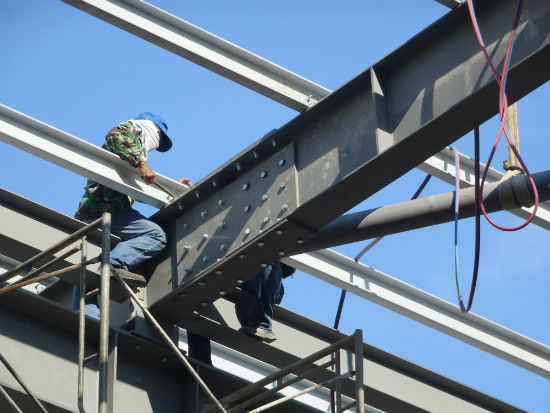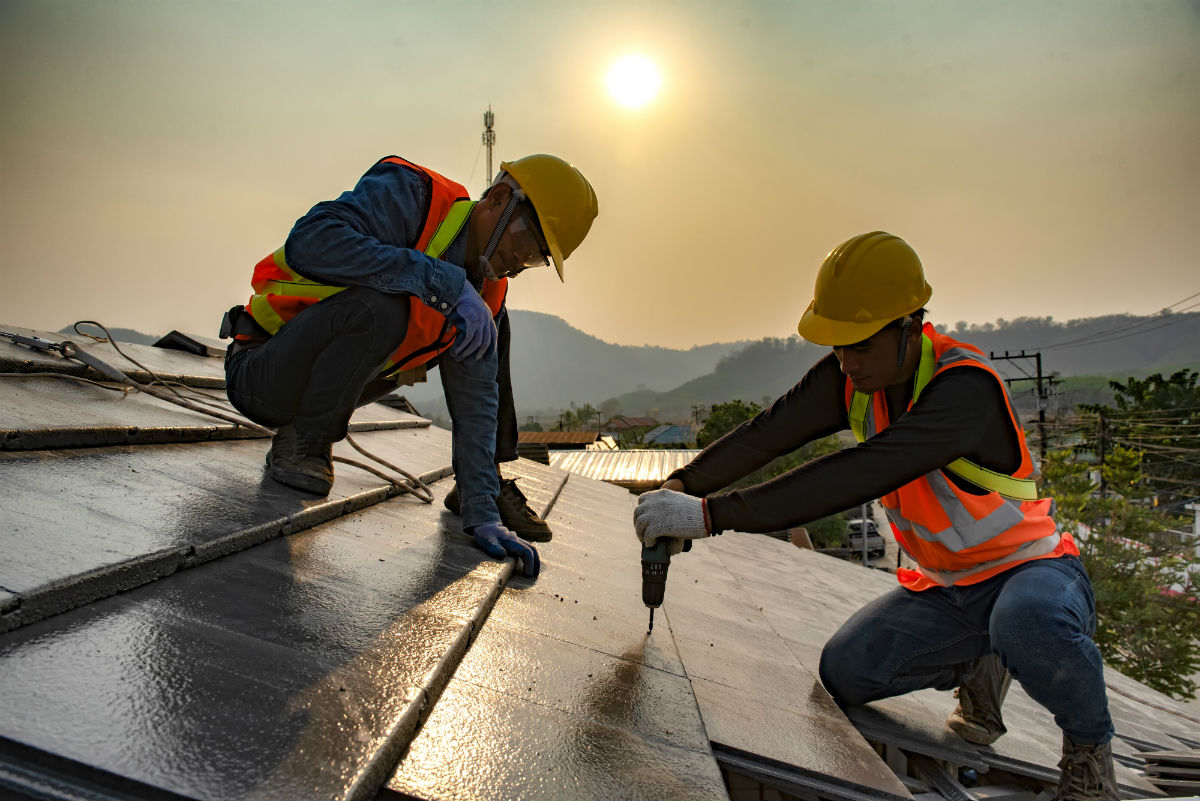No matter the style, size, or height of a roof, one thing is for sure: when the time comes to perform roofing work, safety is the utmost priority.
This is because roofing is an inherently dangerous line of work. In fact, professional roofers have the fifth-highest work-related death rate throughout all construction subsectors, and these deaths aren’t just due to falls. Electrocution, heat exhaustion, and other factors are significant threats for anyone daring enough to perform roofing work.
A-to-Z Roofing & Exteriors is dedicated to upholding the most stringent safety standards on every project we take on. It’s just one reason why we’ve become metro Denver’s go-to roofing services provider since 1994—keeping our roofing technicians safe means they’ll be ready and able to perform more outstanding roof repairs and replacements for both residential and commercial roofs.
Keeping Safety First
When it comes to commercial roofing in particular, it’s tempting to think that safety guidelines can be relaxed due to many roofs being flat or low-sloped. However, roofing accidents can happen on virtually any roof, and we do all we can to protect our workers from falls and other injuries by following a strict checklist for commercial roofing safety.
This checklist includes the following areas of focus, each of which is paid special attention before and during any commercial roofing project.
1. Establishing safe roof access
Gaining access to the roof isn’t always as straightforward as taking the stairs to the rooftop. Many commercial buildings don’t have such access points, which means the roofers need to use ladders or man lifts to reach the work site.
Before work begins, it’s important to determine how workers are going to safely reach the roof throughout the duration of the project.
2. Having a plan for safe material transport
Pallets of roofing materials, heating equipment, disposal bins, and more all need to be safely transported to the roof for easy access by the roofing technicians. A strategy for doing this is key to overall safety.
3. Placing guardrails and flag lines
As a general rule, it’s important to run temporary guardrails or flag lines at least six feet inward from the roof edge. This designates the area to be worked on first, with special attention paid to the outer edges after the majority of the square footage has been treated.
4. Ensuring all workers have adequate Personal Protection Equipment (PPE)
During a commercial roofing project, things get busy. There’s often industrial equipment and roofing materials being shuttled throughout the rooftop, and the crew must remain vigilant of all of the potential dangers to their safety. Even a slight misstep or oversight could result in serious injury.
For this reason, the following PPE hardware should be worn by all workers at all times while on the jobsite:

- Hard hats
- Protective eyewear
- Steel-toed shoes
- Gloves
A-to-Z Roofing & Exteriors has invested in top-of-the-line PPE for our team, and we make it a point to ensure everyone is outfitted with it before work begins.
5. Equipping workers with fall protection harnesses when applicable
Even though many commercial buildings in Colorado have flat or low-sloped roofs, there is still the very real risk of falls from the edges. This is especially true on days when the wind picks up.
To help protect against falls, any roofing technician who is treating an area within six feet of the roof ledge should wear a fall protection harness that is securely attached to an anchor point on the roof.
6. Providing adequate hydration and as many breaks as needed to prevent from overheating
Roofers often work long hours in direct sunlight. And, here in Colorado, the summer heat can be sweltering. Dehydration and heat exhaustion pose significant risks to roofers, which is why plenty of water and cool-off breaks are provided to each worker.
7. Clearly marking vents, shafts, stovepipes, and other potential hazards
Commercial rooftops are not always made for walking on, let alone conducting hard labor on. And, chutes and shafts can sometimes be located in areas where they’re not expected.
A thorough safety check of the roof prior to project commencement should include a marking of all potential hazards.
8. Communicating roles and responsibilities to everyone involved
This may seem to go without saying, but it’s surprising how few roofing companies actually delegate specific tasks to each worker. When everyone knows exactly what their job is and what equipment they should be prepared to use, the incidence of on-the-job accidents is significantly reduced.
Always remember: when it comes to roofing, it’s safety first!

